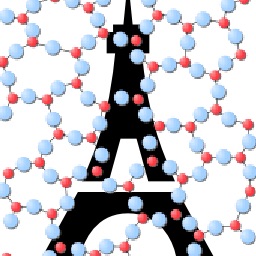Irradiation-induced topological transition in SiO2: Structural signature of networks' rigidity
By affecting the connectivity of atomic networks, composition, temperature, or pressure can induce topological transitions between the three atomic states of rigidity — flexible, isostatic, and stressed-rigid. However, no clear structural signature of such transitions has been elucidated thus far. Here, based on realistic molecular dynamics simulations of irradiation-induced damage in quartz, we report the first evidence of a rigid-to-flexible rigidity transition controlled by structural variations only. This topological transition is shown to arise from the simultaneous loss of atomic Eigenstress and onset of network flexibility, and features a well-defined structural signature in the medium-range order of the atomic network.
